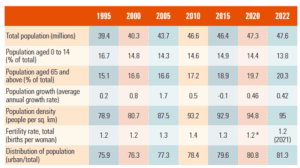Amazon Launches “Amazon Pharmacy”, An Online Pharmacy Store

Implications across the PBM industry
Save as PDF
From bookstores to cloud computing, Amazon keeps us guessing which industry they will disrupt next. Amazon had their sights set on disrupting the retail pharmacy industry starting with their 2018 acquisition of PillPack, a mail order pharmacy which provides customized “daily dispensing” packs for patients taking multiple medications. On November 17, 2020, Amazon announced it is entering the pharmacy space with two new pharmacy products: Amazon Prime prescription savings benefit and Amazon Pharmacy. Amazon Pharmacy will provide customers the ability to order prescriptions through their platform and obtain delivery within days.
This announcement comes as many states begin to reinstate COVID-19 restrictions and more Americans look to receiving their medications via mail to avoid exposure. While this new offering provides consumers an additional access point to their medication, it is important to consider the implications across the pharmacy benefit industry.
Amazon is focused on providing solutions to reduce costs and provide efficient access to medications for both cash paying and insured customers. The first component, Amazon Prime’s prescription savings benefit is administered by Inside Rx, a subsidiary of Evernorth. Evernorth is part of Cigna’s recently rebranded health services offerings which also encompasses the pharmacy benefit manager (PBM) Express Scripts. This program, exclusive to Prime members, provides savings at Amazon Pharmacy or at over 50,000 participating pharmacies across the country. Major chains including CVS, Rite Aid and Walgreens participate in the program.
The Amazon Prime prescription savings benefit offers customers without insurance significant savings of up to 80% on generic and 40% savings on brand named medication. For customers with insurance, customers will also have access to the discounted cash price; however, prescriptions processed under the Amazon Prime prescription savings benefit will be run outside of their insurance and will not apply toward any applicable deductible or out of pocket maximums.
The second component of this announcement includes a full-service pharmacy experience from a desktop or mobile device with Amazon Pharmacy, a new “store” on the Amazon platform. Customers can order or refill prescriptions and receive delivery with Amazon’s 2-day delivery (free for Prime members), although some prescriptions may take up to 5 days with a shipping fee for delivery if a customer is not a Prime member. Consumers will have access to a variety of medications including commonly prescribed drugs like birth control, insulin, metformin and sumatriptan but will not deliver Schedule II controlled medications which still leaves a need for traditional pharmacy fulfillment options.
How It Works:
Working with their doctor, patients can ask that their prescription(s) be sent directly to Amazon Pharmacy or request a prescription transfer to Amazon Pharmacy from an existing retail or mail order pharmacy. Using a secure pharmacy profile, customers will be able upload their insurance information, manage their prescriptions and choose a payment method for any copayments. Savings for those without insurance may be offered through the Amazon Prime cash discount card and customers can opt to use flexible spending accounts (FSA) or health savings accounts (HSA) to purchase their prescriptions. We anticipate that customers with insurance will be able to comparison shop for out-of-pocket costs under their insurance plan to those under the Amazon Prime prescription savings benefit.
Implications Across the PBM Industry
The pharmacy supply chain is complex and because of this complexity, the price of prescription drugs is inflated causing both payers and patients to feel the pinch. Focus on prescription discount card programs is increasing as one of the ways for payers and patients to tackle “the pinch”. This market continues to grow, now with the entry of Amazon Prime joining GoodRx, Optum Perks, SingleCare, Blink Health and others.
Amazon has a proven track record of leveraging logistics and technology to simplify operations, providing efficiency and cost-savings. It is fair to anticipate they will take the complexities of the pharmacy supply chain head on, providing streamlined pharmacy enhancements for both payers and patients.
While the thought of a streamlined, cost-effective option to receive medications on the doorstep from a retail giant with immense purchasing power may seem appealing, consideration must be taken when it comes to consumer data.
The current pharmaceutical landscape is full of consumer data. Patient information is collected and shared on a regular basis between providers and pharmacies to manage and treat patients. This mass data collection is also leveraged to identify trends, manage health care expenses, monitor medication usage patterns, support health plan care and quality management programs and advance research and development efforts with both pharmacy benefit managers and third-party administrators (TPA’s). While data collection and analysis does offer numerous benefits, it also comes with inherent risk of patient data breaches.
Things to Consider:
Will the ability for customers to compare more readily insured out of pocket costs to cash paying discounts in the Amazon Pharmacy platform result in a greater shift to cash pay outside of the pharmacy benefit?
In the current pharmacy landscape, health plans and PBMs have limited view into cash paying transactions creating data gaps in their care and quality management programs.
Will Amazon Prime bridge this gap working cooperatively with health plans to provide a wholistic view of medication use regardless of payment methodology?
Privacy over health and medication information is subject to HIPAA, the federal Health Insurance Portability and Accountability Act, and Amazon Pharmacy will be required to abide by these rules just like any other pharmacy provider. While HIPAA controls what and how information can be used and shared, users of Amazon Pharmacy may share this data either intentionally or unsuspectingly for the convenience of doorstep delivery. The comfort level between Amazon and buyers is high, so accepting a new pharmacy offering aiming to streamline their day-to-day lives should be easily accepted. The question is, however, how will Amazon Pharmacy use this data?
Scott Benefit Services is committed to providing our clients and partners with the most current information on this announcement from Amazon. Details are still emerging, and we will update as more information becomes available from Amazon as well as our PBM partners. If you have outstanding questions, contact your Scott Benefits Consultant.
Authors
 Sharon Montgomery
Sharon Montgomery
BSPharm, MA, RPh, Principal Advisor
Confidio






